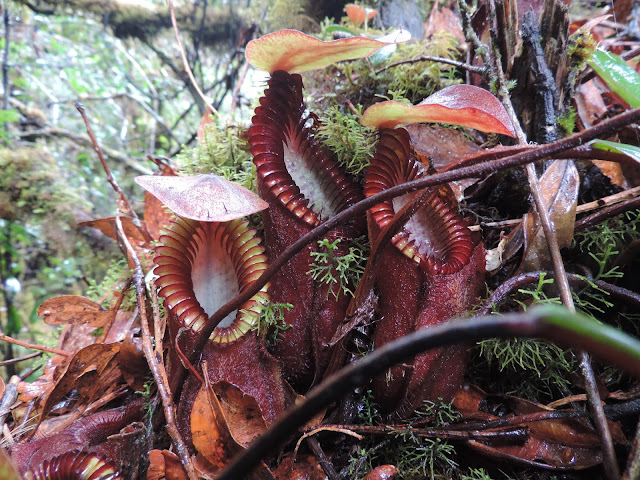Hello all,
As some of you know by now, especially Nepenthes enthusiasts, there's a new girl in town : Nepenthes diabolica, formerly known as "Nepenthes red hamata hairy".
The description has been published on Wednesday:
You can check the paper here.
This member of the tentaculatae section and close relative to Nepenthes hamata has been discovered in 2004 by explorer Chien Lee. It has been introduced and slowly spread in cultivation since then. Although N. diabolica has already been used to produce some horticultural hybrids (such as the increasingly infamous N. "smilodon" (N. diabolica x N. hamata, created by seasoned UK grower Simon Lumb), it remains a rare and pricey plant and therefore a highly threatened one in the wild. In the description paper, we wrote:
'The population of Nepenthes diabolica found at the type locality is the only one known. Although habitat loss is unlikely to occur on such an isolated mountain, the population is small and seriously threatened by local poachers who have visited the mountain and advertised poached plants for sale on the internet, mainly targeting the Javanese (Jakarta), European, Japanese and US markets.'
N. diabolica is now regularly available in the market though and with a bit of patience and savings, the species will be to grab for any dedicated grower. Please, do not buy wild collected plants as they will likely die in your hands anyway.
In addition to the scientific paper I co-authored, I have asked a couple of friends who have visited N. diabolica in situ to share here on my decade old blog some beautiful photographs of this stunning species. Even though the taxon has been uncovered in 2004, pictures of wild specimens are fairly rare in the internet. So this blog post and another one that will follow will help overcome this deficiency.
The first series of pictures has been provided by Nepenthes and Heliamphora expert Urs Zimmermann.
'Nepenthes diabolica is a summit-growing species, favouring mossy montane forest at elevations of 2200–2300 m. It is mainly found as a low epiphyte, though terrestrial and truly epiphytic plants were noted. The most robust plants appear to be those rooted on thick mats of moss attached to the bases of tall-growing bushes and trees. It seems to prefer shaded positions and it was not observed in any of the rare summit clearings, unlike N. hamata in comparable habitats.'
(Quote from N. diabolica description)














No comments:
Post a Comment